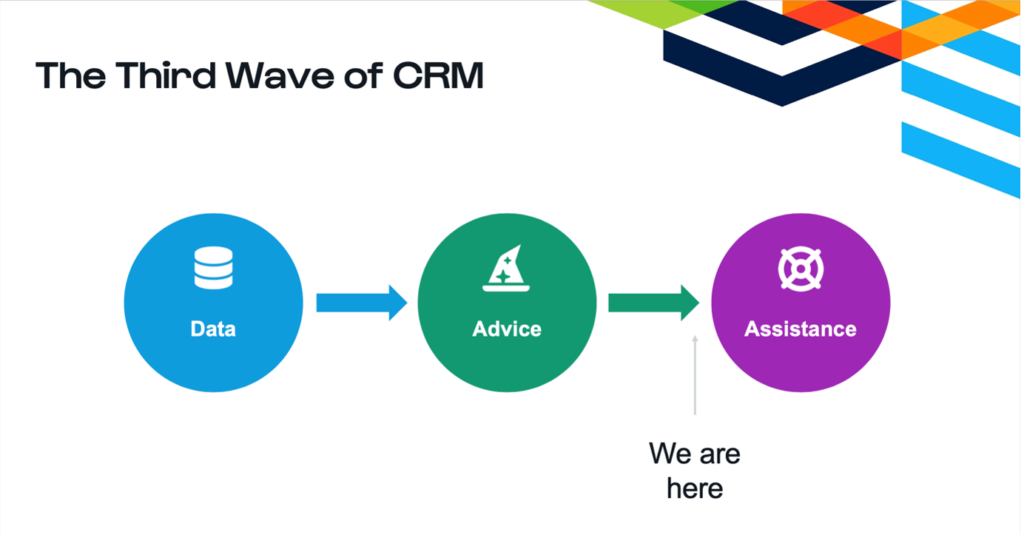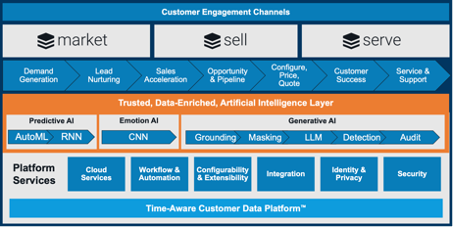The news
On October 4 and 5, 2023, SugarCRM held its Connected event followed by an analyst summit in London. The first day – Connected – was targeted mostly at customers while the second day focused on analysts.
The event started off with an intense speech by Katherine Grainger, DBE, a British rowing champion. Her core messages were about team bonding, the importance of communication, continuous improvement, and perseverance (well, at least that’s my take). This was followed by information about what is new in the software and, more importantly, a customer panel.
The main sponsor, Mobileforce, placed some words about the partnership.
In addition, the analysts had 1:1s with customers, partners, and Sugar executives.
The second day was filled with information targeted at analysts.
CEO Craig Charlton and his executive team shared about financial status, strategy and more in-depth product news. Sugar being a privately held, VC backed company, the financials are of course under NDA, so it suffices to say that the company is not one of the biggest players but on a solid trajectory with high win and customer retention rates. According to Charlton, this can be attributed to the word “ease”, which later got confirmed via a marketing study related by CMO Clare Dorrian.
Going forward, the continuation of this growth shall be supported by verticalization, a concentration on AI and a focus on the upper mid-market and lower enterprise market. This is based on the assessment that CRM can become an assistant to its users via the smart application of (generative) AI to “let the platform do the work” for the users.
The industry strategy got explained by the General Manager Platform Christian Wettre and SVP for Product Marketing Volker Hildebrand while CTO Rich Green and Chief Product Officer Zac Sprackett relayed the AI strategy. We also got a glimpse into upcoming user interface improvements that are based on a customer-led research effort and aim at being visually more pleasing, better use of screen real estate while reducing a possible cognitive overload.
Of course, there was plenty of room to interact with partners, customers, and Sugar personnel, in arranged as well as in more informal and social settings.
The bigger picture
We have seen a perhaps inflationary use of the terms platform and CX for some time now. Being a platform player and strong on CX has been an important message for vendors for quite some years now. So, it is quite natural that vendors are looking for the next topic, e.g., blockchain, NFT, or metaverse in the past years.
Those turned out to be less important or viable. Now, there is another one.
If there is one topic that every, and I mean e.v.e.r.y vendor jumps on, it is generative AI. OpenAI managed to start a bandwagon with incredible force.
One thing of note regarding the use of AI is that most companies do not talk about how they are technically making sure that sensitive data is not only used appropriately but also securely. They are simply referring to their AI policy, which one can trust – or not. As per Salesforce’s 6th edition of the State of the connected customer (registration necessary) report only a small majority trusts in companies ethical use of artificial intelligence. This is at the bottom of the asked for criteria.
The other main trend is the one towards industry clouds or industry solutions to augment or replace horizontal software solutions.
Last, but not least, there is a growing focus to make systems actually useful, i.e., have them deliver more value to the users as output than was invested as input by them.
My point of view and analysis
This was a well-organized event that conveyed a well thought through message. Big kudos go to the Sugar team, with an emphasis on everyone who organized it. The “biggest qualm” I have with it is my usual one: I have trouble relating to the external keynote speakers to the vendor and the vendor message. Maybe, there is an overall need to have a closer alignment here. Don’t get me wrong, Ms. Grainger has a highly interesting story to tell.
Customer feedback about the existing functionality and the way it was delivered was very solid. Every customer representative made a point about the good cooperation with SugarCRM and with SugarCRM’s partners.
Sugar starting an industry strategy with an initial focus on manufacturing industries makes a lot of sense. The company is strong in the chosen segments and it therefore is important to build on this strength, also to defend this market and to learn in something of a “friendly” environment. The partnerships that Sugar has engaged in, e.g., with Mobileforce, Sales-I or Tribilo, as well as with some more that will be announced in the next few weeks, will strengthen Sugar’s offering in this (and other) industry.
The challenge is twofold.
As said above, everyone goes industry and everyone goes after the upper mid-market, as the enterprise segment is quite saturated. At the same time, the tier one players work hard on scaling down to the SMB market. With that, Sugar is square in Salesforce territory, probably even sandwiched by Salesforce – and other tier one vendors. On top of that, there is some risk in being “undercut” by other vendors that move up from the SMB segment but focus more on the lower segments of mid-market. Avoiding being sandwiched needs a very strong value proposition based on a strong solution, combined with strong messaging. The solution is there, especially when considering the partnerships and a concept to act as a main contractor, offering a single face to the customer. Current customer feedback and, the retention rate are testament to this.
The second challenge is about industries. It is not enough to focus on one industry to convey a strong industry strategy. It actually may weaken the play in other industries. This makes it important to extend the industry strategy into the, say, top 5 industries fast, for increased credibility.
Regarding messaging, it remains to be seen whether “ease” combined with “let the platform do the work” as a message are strong and differentiating enough. Personally, I’d look for something that raises more positive emotion and gets away from the term “platform”. Everyone is doing platform, these days.
Which brings us to the topic of AI. SugarCRM is postulating a next iteration of CRM as a true assistant. It would be interesting to see how this could fit into the messaging.

The third wave of CRM; source SugarCRM
Assistant is also how the company positions its generative AI scenarios, which are available in a controlled beta right now. And this resonates well with the messages of ease and of users receiving more from the system than investing into it. An assistant takes away work and delivers results.
It would be good if these functionalities were released very soon.
Adding to the positive list here is that Sugar has a communicable concept of how to make these services available as part of a trusted AI layer.

Sugar Platform AI Architecture; source SugarCRM
Yes, this is high level, and the proverbial devil lies in the details. But then, there is only one other company that does this so far, to my knowledge (happy to be proven wrong). Kudos here.
CRM systems as assistants are going the right way. Still, I’d like to put out a challenge: How about delivering a truly intelligent CRM? A system that adapts to the users’ needs? This is a tall order, but this is where the value to users and businesses ultimately lies. Maybe a company with fresh ideas that is backed by a strong VC is in the position to start this way?
All in all, Sugar is on the right way. There still is a bit of “me too” in the messaging and in the product: Platform, industry, generative AI, … Part of this is inevitable, part can be easily changed. What I see is a competitive solution and a strong team that is able to move the needle.

